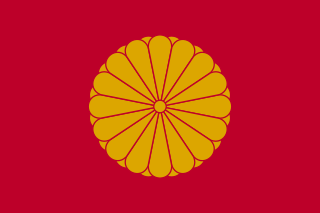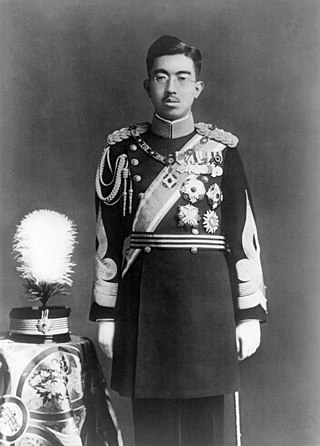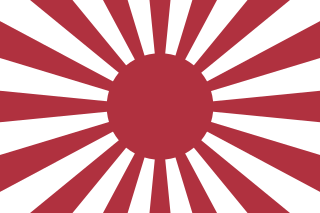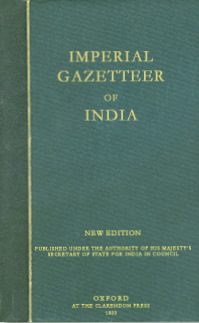This is a list of states in the Holy Roman Empire beginning with the letter T:
| Name | Type | Imperial circle | Imperial diet | History |
|---|---|---|---|---|
| | Lordship | n/a | n/a | 1162: First mentioned 1210: Inherited and renamed to Waldburg |
| | Barony | Aust | PR | 1040: First mentioned 1160: Part to Chur 1177: Extinct; to Chur bef. 1200: Sold to Reichenberg 1239: Sold to the Tyrol 1273: To Matsch as fief of the Tyrol 1464: Sold to Austria 1687: To Dietrichstein 1684: Acquired Tarasp 1802: Count Leslie of Balquhain 1803: Tarasp to Switzerland; compensated with Neuravensburg 1806: Neuravensburg to Württemberg |
| | Duchy | n/a | n/a | 1152: Partitioned from Zähringen c. 1215: Sold territory in Ortenau and Breisgau to Swabia 1283: Partitioned into Teck-Owen and Teck-Oberndorf 1363: Reunited by Teck-Owen 1365: Acquired Mindelheim 1374: Horb and Oberndorf sold to Hohenberg-Rottenburg 1381: Teck sold to Württemberg 1439: Extinct; to Rechberg-Babenhausen |
| | Duchy | n/a | n/a | 1283: Partitioned from Teck 1363: Extinct; to Teck-Owen |
| | Duchy | n/a | n/a | 1283: Partitioned from Teck 1363: Renamed to Teck |
| | County | Low Rhen | WE | c. 1100: First mentioned 1189: Acquired Ibbenbüren 1262: Extinct; to Bentheim 1279: Partitioned from Bentheim 1328: Extinct; to Schwerin-Wittenburg 1356: Partitioned from Schwerin-Wittenburg 1365: Acquired Rheda 1385: Acquired Iburg 1400: Lost Cloppenburg, Friesoythe and Bevergern to Münster 1493: Partitioned into itself and Tecklenburg-Lingen 1557: Extinct; to Bentheim-Steinfurt 1606: To Bentheim-Tecklenburg-Rheda 1696: To Solms-Braunfels 1707: Sold to Prussia 1808: To Berg 1811: To France 1813: To Prussia |
| | County | Low Rhen | WE | 1493: Partitioned from Tecklenburg 1541: Extinct; to Tecklenburg 1547: To Egmond |
| | Lordship 1664: County | - | - | 13th Century: Partitioned into Tengen-Hinterburg and Tengen-Vorderstadt 1275: Renamed from Tengen-Vorderstadt 1422: Acquired Nellenburg 1465: Sold Nellenburg to Austria 1522: Sold to Austria 1651: To Rost 1663: To Auersperg 1664: HRE County 1806: To Baden |
| | Lordship | n/a | n/a | 13th Century: Partitioned from Tengen 1275: Sold to Klingenberg 1305: Sold to Austria 1387: To Klingenberg 1462: To Bodman and Jungingen 1488: To Mainau Commandry of the Teutonic Order 1805: To Baden |
| | Lordship | n/a | n/a | 13th Century: Partitioned from Tengen 1275: Renamed to Tengen |
| | County | Swab | SC | 1780: Created from Montfort after purchase by Austria 1805: To Bavaria 1810: To Württemberg |
| | Lordship 1665: HRE County | Swab | SC | 1109: First mentioned; ministerialis of Hohenstaufen 1268: Imperial immediacy 1360: To Margraviate of Burgau and Augsburg 1560: To Baumgartner 1665: Sold to Sinzendorf-Fridau-Neuburg 1705: Sold to Stadion Alsatian Line 1741: To Stadion-Thannhausen 1806: To Bavaria |
| | Abbacy | Low Rhen | RP | 992: Formed 1292: Imperial immediacy 18th Century: HRE Princess of the Empire 1794: To France 1815: To the Netherlands |
| | Lordship | n/a | n/a | 1100: First mentioned 1406: Imperial immediacy 1806: To Würzburg 1814: To Bavaria |
| | Landgraviate | n/a | n/a | 1218: To Kyburg 1264: To Habsburg-Laufenburg 1274: To Kyburg 1379: To Austria 1460: Made subject of the Swiss Confederation 1648: Left the Empire as part of Switzerland |
| | County Palatine | n/a | n/a | 1291: Northern half of the County Palatine of Saxony sold to Brandenburg; the southern part retained by Meissen known henceforth as the County Palatine of Thuringia 1350: Imperial confirmation of title |
| | Princely Landgraviate | n/a | n/a | 1131: Louis I appointed Landgrave of Thuringia 1180: Acquired the County Palatine of Saxony 1247: Extinct; divided between Hesse and Meissen |
| | 1512: Lordship 1608: Barony 1624: Count 1695: Principality | El Rhin | WE / PR | 1512: Granted noble status in the Empire 1608: HRE Baron 1615: Appointed hereditary Imperial Postmaster General 1624: HRE Count 1681: Spanish Prince 1695: HRE Prince 1723: Acquired Eglingen 1754: Bench of Secular Princes 1785: Acquired Scheer and Friedberg 1803: Acquired Buchau, Marchtal, Neresheim and Ostrach 1806: To Bavaria, Hohenzollern-Sigmaringen and Württemberg |
| | Lordship | n/a | n/a | 1205: Förtsch von Thurnau first mentioned; ministerialis of Andechs-Meran 1248: Imperial immediacy 1288: Half sold to Bamberg 1292: Other half made fief of Bamberg 1564: Extinct; to condominium of Künsberg and Giech as fief of Bamberg 1699: Imperial immediacy 1731: Künsberg share sold to Giech 1796: To Prussia 1807: To France 1810: To Bavaria |
| | Barony 1209: County | n/a | n/a | 1044: First mentioned 1209: HRE County 1226: Lost Wil and Alt-Toggenburg to St Gall's Abbey 1333: Acquired Vaz 1384: Acquired Kyburg 1394: Partitioned into Toggenburg Elder Line and Toggenburg Younger Line 1468: Sold to Abbacy of St Gall |
| | County | n/a | n/a | 1394: Partitioned from Toggenburg 1400: Extinct; succession dispute between Toggenburg Younger Line and William, Count of Montfort 1436: Most to Toggenburg Younger Line; parts to Montfort-Toggenburg |
| | County | n/a | n/a | 1394: Partitioned from Toggenburg 1414: Acquired Wartau 1417: Acquired Feldkirch 1424: Acquired Rheintal, Rheineck, Dornbirn and the Inner Bregenzerwald 1436: Extinct in male line 1437: Divided between numerous states |
| | Bishopric | Upp Rhen | EC | 365: Formed 1048: Imperial immediacy 1552: To France 1648: Annexation to France formally recognised |
| | Imperial City | Upp Rhen | RH | 13th Century? Free Imperial City 1552: To France 1648: Annexation to France formally recognised |
| Prince of Trauttmansdorff-Weinberg and Neustadt am Kocher, Princely Count of Umpfenbach, Baron of Gleichenberg, Nogau, Burgau and Totzenbach, etc. | Lordship 1598: Barony 1623: County 1805: Principality | Swab | SW | 1308: First mentioned 1598: HRE Baron 1623: HRE Count 1631: Personalist in the Swabian Circle 1635: Acquired Weinsberg 1648: Returned Weinsberg to Württemberg 1778: Personalist in the Bench of Swabian Counts 1805: HRE Prince |
| | Bishopric | Aust | EC | 301: First mentioned 1004: Acquired territory 1027: HRE Prince of the Empire 1419: Subject of the Emperor c. 1519: Acquired Castelbarco and Rovereto 1578: Imperial immediacy 1803: To Austria as part of Tyrol 1805: To Bavaria 1810: To Italy 1813: To Austria 1918: To Italy |
| | Imperial City | Aust | n/a | 1285: Free Imperial City 1382: To Austria 1809: To France 1813: To Austria |
| | Bishopric c. 811: Archbishopric 1356: Electorate | El Rhin | EL | c. 250: First mentioned 771: Autonomous c. 811: Raised to Archdiocese 898: Imperial immediacy 1356: HRE Prince-Elector 1795: Left-bank territory to France 1803: Right-bank territory to Nassau-Weilburg |
| | County 1146: County Palatine | n/a | n/a | 1078: First mentioned, in the Nagoldgau 1146: HRE Count Palatine 1180: Partitioned into itself and Montfort c. 1219: Partitioned into Tübingen-Tübingen and Tübingen-Asperg |
| | County Palatine | n/a | n/a | c. 1219: Partitioned from Tübingen 1229: Acquired Giessen 1252: Partitioned into Tübingen-Böblingen and itself 1264: Sold Giessen to Hesse 1308: Sold Asperg to Württemberg 1340: Sold Beilstein to Württemberg 1357: Extinct |
| | County Palatine | n/a | n/a | 1252: Partitioned from Tübingen-Asperg 1294: Acquired Tübingen 1342: Sold Tübingen to Württemberg 1357: Sold Böblingen to Württemberg; renamed to Tübingen-Lichteneck |
| | County Palatine | n/a | n/a | c. 1251: Partitioned from Tübingen-Tübingen 1289: Sold Laichingen to Bebenhausen Abbey 1294: Sold Tübingen to Tübingen-Böblingen 1382: Sold to Württemberg 1391: Extinct |
| | County Palatine | n/a | n/a | c. 1251: Partitioned from Tübingen-Tübingen 1294: Extinct in male line 1306: To Hohenberg-Nagold by marriage |
| | County Palatine ?: County | n/a | n/a | c. 1357: Renamed from Tübingen-Böblingen ?: HRE Count 1634: Extinct in male line 1664: Sold to Austria 1666: Extinct |
| | County Palatine | n/a | n/a | c. 1219: Partitioned from Tübingen c. 1251: Partitioned into Tübingen-Horb and Tübingen-Herrenberg |
| | Imperial City | Upp Rhen | RC | 1312: Free Imperial City 1648: To France |
| | County | Aust | n/a | 10th century? 1140? 1363: To Austria 1493: Princely County 1805: To Bavaria 1814: To Austria 1918: Southern Part to Italy |


















